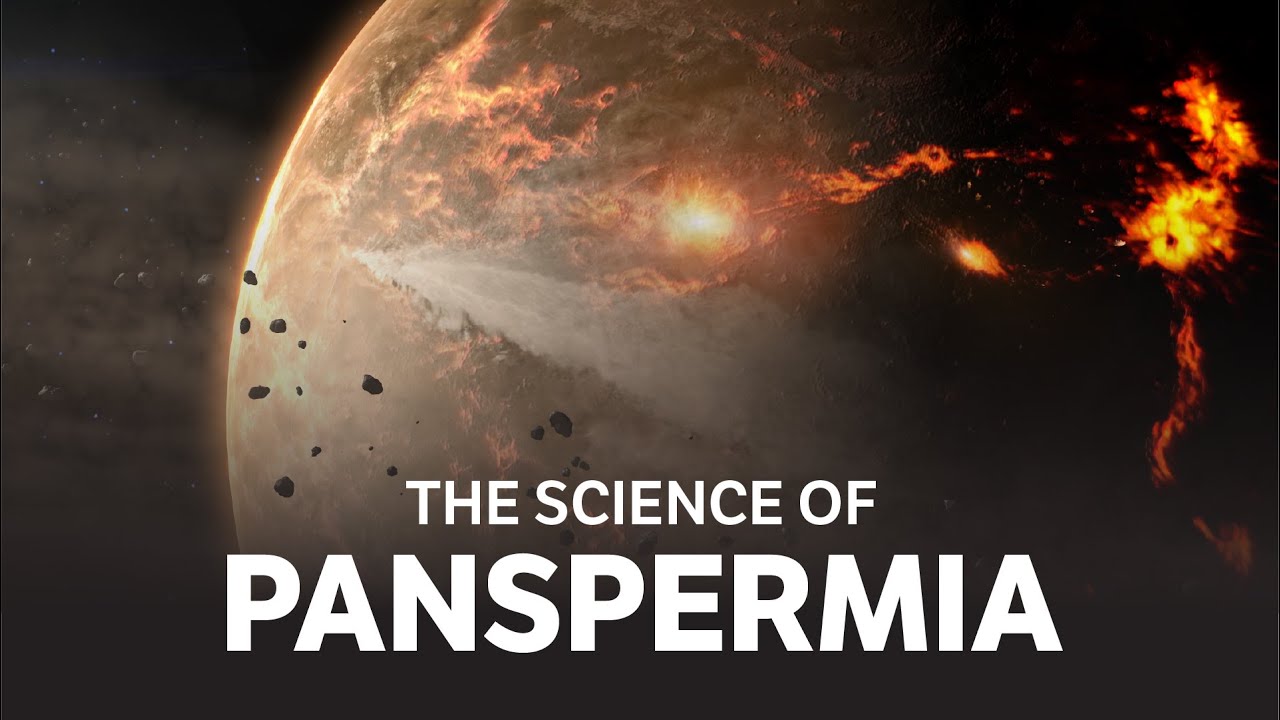Did Life on Earth Come From Outer Space?
Summary
TLDRThis video explores the panspermia hypothesis, a scientific theory suggesting that life on Earth may have originated from space, possibly delivered by comets or advanced civilizations. It details how microorganisms could survive the journey across the cosmos, facing challenges like escaping their host planet, surviving space conditions, and withstanding a planet's impact. The theory posits that life on Earth might have been seeded from other worlds, raising profound questions about our true origins—whether we're products of Earth or of the universe at large.
Takeaways
- 🚀 A spacecraft has been journeying for a million years, traveling at 60,000 miles per hour, scanning star systems for a suitable planet to seed with life.
- 🌍 The spacecraft's mission is to find a lifeless planet with a young yellow sun, where it can drop bacterial payloads to start the process of colonization and evolution.
- 🦠 The payload contains 1,000 kilograms of bacterial samples, with 100 different types suited for various environments, aiming to colonize the new planet's surface.
- ⏳ Over billions of years, these bacteria evolve into complex, conscious beings, creating civilizations and eventually giving their home planet a name—Earth.
- 🔬 The panspermia hypothesis suggests that life on Earth might have originated elsewhere in the universe, either by accident or intentionally through directed panspermia.
- 📜 The theory of panspermia has been proposed and supported by scientists like Francis Crick and Svante Arrhenius over the years, and it's a credible scientific theory.
- 💫 Panspermia involves microorganisms traveling through space, surviving extreme conditions, and eventually colonizing a new planet after millions of years of transit.
- 🪐 Microbes could escape a planet through natural processes like volcanic eruptions or asteroid impacts, then survive the harsh conditions of space while shielded inside rocks.
- 🌠 Modern experiments have shown that certain bacteria can survive the vacuum of space and the intense heat of re-entry, supporting the possibility of panspermia.
- ❓ While evidence suggests panspermia is possible, the origin of life remains a mystery, with the question of where life began still unresolved.
Q & A
What is the main concept of the theory discussed in the video script?
-The main concept is 'panspermia,' the hypothesis that life on Earth may have originated from microorganisms or chemical compounds delivered from outer space, either accidentally or intentionally.
Who first proposed the idea of directed panspermia, and what does it suggest?
-The idea of directed panspermia was first proposed by Francis Crick in the 1970s. It suggests that life on Earth could have been intentionally seeded by an advanced extraterrestrial civilization.
How does panspermia differ from traditional Earth-origin theories of life?
-Panspermia suggests that life may have come from space, while traditional Earth-origin theories propose that life originated spontaneously on Earth from chemical reactions in early Earth environments.
What are the three challenges microorganisms must face to travel from one celestial body to another, according to the video?
-The three challenges are escape from the host planet, surviving the transit through space, and surviving the landing on a new planet.
How can microorganisms survive the harsh conditions of space during transit?
-Microorganisms can survive space by entering a state of cryostasis as spores, protecting themselves from the cold and dry conditions. However, they also need shielding from cosmic radiation, which can be provided by rocks.
What evidence supports the idea that life could have originated in space and arrived on Earth?
-Evidence includes the discovery of amino acids and organic compounds in space, such as those found during the Stardust mission in a comet’s tail, and the fact that certain microbes can survive in space-like conditions.
What is soft panspermia, and how does it differ from directed panspermia?
-Soft panspermia refers to the idea that life's building blocks, such as amino acids, arrived on Earth via space dust or comets, while directed panspermia suggests that life was intentionally sent to Earth by an advanced civilization.
What is the significance of the first 500 million years of Earth's history in the panspermia hypothesis?
-The first 500 million years of Earth were tumultuous and inhospitable, making it unlikely for life to have originated here. However, life did appear soon after, which raises the possibility that it was seeded from space.
What modern experiments have been conducted to test the viability of life traveling through space?
-Experiments conducted aboard satellites and spacecraft have shown that many microorganisms can survive the cold and dry conditions of space, but require protection from radiation, which could be provided by rocks.
Why is there no conclusive evidence yet to prove panspermia as the origin of life on Earth?
-Evidence that life came from space could have been lost due to Earth's geological processes like plate tectonics, and because life might have originated billions of years ago, making it difficult to trace its precise origin.
Outlines

Этот раздел доступен только подписчикам платных тарифов. Пожалуйста, перейдите на платный тариф для доступа.
Перейти на платный тарифMindmap

Этот раздел доступен только подписчикам платных тарифов. Пожалуйста, перейдите на платный тариф для доступа.
Перейти на платный тарифKeywords

Этот раздел доступен только подписчикам платных тарифов. Пожалуйста, перейдите на платный тариф для доступа.
Перейти на платный тарифHighlights

Этот раздел доступен только подписчикам платных тарифов. Пожалуйста, перейдите на платный тариф для доступа.
Перейти на платный тарифTranscripts

Этот раздел доступен только подписчикам платных тарифов. Пожалуйста, перейдите на платный тариф для доступа.
Перейти на платный тарифПосмотреть больше похожих видео

O QUE É A PANSPERMIA?

7 theories on the origin of life

Evolução Química - Origem da Vida - Aula 02 - Módulo 0 - Prof. Guilherme

Teori asal usul kehidupan - Biologi kelas 12 #biologi #kurikulum2013 #biology #kelas12 #evolusi

Life on Earth Came from Space - The Panspermia Hypothesis

All Theories of the Origin of Life in 4 Minutes
5.0 / 5 (0 votes)
